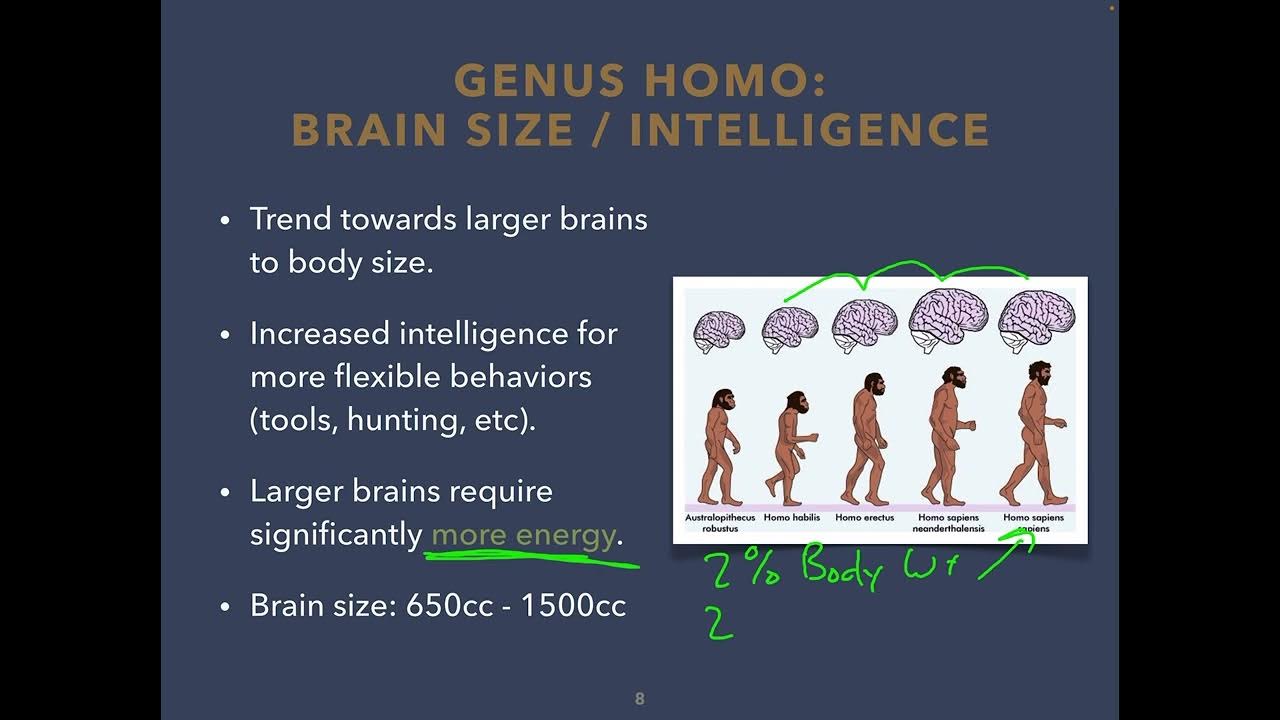The First Humans | Homo Habilis
Summary
TLDRThis video explores the origins of early human species, focusing on Homo habilis, the first species of the Homo genus, which lived in Africa between 2.4 to 1.4 million years ago. It describes how Homo habilis evolved with human-like characteristics, such as tool use and increased brain size, while also retaining ape-like features. The video details fossil discoveries made in Tanzania in 1960, the development of stone tools, and the evolutionary significance of Homo habilis, possibly leading to Homo erectus. Viewers are encouraged to engage with the content by liking and subscribing.
Takeaways
- 🧑🔬 The term 'human' refers to individuals of the genus *Homo*, which is Latin for 'man'.
- 🌍 The first humans emerged in Africa around 2 million years ago, with Homo habilis being one of the earliest species.
- 🦴 Homo habilis, also known as the 'handyman', lived between 2.4 to 1.4 million years ago and is considered one of the least similar to modern humans.
- 🧠 Homo habilis had a larger cranial capacity than its predecessors, suggesting more advanced brain function and behavior.
- 🦷 Fossil evidence showed that Homo habilis had smaller molar and premolar teeth, resembling human-like features.
- 💡 Homo habilis likely discovered and used stone tools, breaking bones to access nutritious marrow and leading to the creation of early tools.
- 🔨 The tools made by Homo habilis are known as Oldowan tools, although there is debate about whether earlier species like Australopiths also used tools.
- 👣 Homo habilis had both human-like and ape-like traits, such as long arms and a prognathic face, and they were small in stature.
- 🏞️ This species inhabited eastern and southern Africa, moving from place to place for food and resources rather than settling in one area.
- 🧬 Some theories suggest that a population of Homo habilis may have evolved into Homo erectus, the earliest indisputable human species.
Q & A
What does the word 'human' mean and where does it originate from?
-'Human' originates from the Latin word for 'man,' and it refers to any individual belonging to the genus Homo.
When did the first humans emerge and where?
-The first humans emerged in Africa around 2 million years ago.
What is Homo habilis and why is it significant?
-Homo habilis, also known as 'handy man,' was the first species of the genus Homo and is significant for being considered the first true human species.
When and how was Homo habilis discovered?
-Homo habilis was discovered in 1960 by a research team in Olduvai, Tanzania. They found fossil remains that appeared to bridge the gap between australopiths and humans.
What are some of the distinguishing features of Homo habilis?
-Homo habilis had long arms, a moderately prognathic face, and a cranial capacity slightly less than half of modern humans. Males stood at 1.3 meters and weighed around 37 kg, while females were about 1 meter tall and weighed 32 kg.
What evidence suggests that Homo habilis behaved in a human-like manner?
-Fossils of Homo habilis showed increased cranial capacity and smaller molar and premolar teeth, indicating human-like behaviors. Additionally, hand and foot bones suggested they could manipulate objects with precision.
What tools are associated with Homo habilis, and how were they made?
-Homo habilis is associated with the creation of the first stone tools, known as Oldowan tools. These tools were made by hitting stones against each other or surfaces to create sharp edges.
What is the significance of bone marrow in Homo habilis' survival?
-Bone marrow, which is highly nutritious, may have been discovered by Homo habilis while scavenging for food. Breaking bones to access the marrow likely led to the use and creation of stone tools.
Did Homo habilis live in fixed settlements?
-No, Homo habilis did not settle in one place but moved around nearby areas, likely due to the scarcity of food and the need to hunt and gather.
What might have happened to Homo habilis as a species?
-Homo habilis likely went extinct, but some researchers believe that a population of Homo habilis may have evolved into Homo erectus, the earliest indisputable human species.
Outlines

This section is available to paid users only. Please upgrade to access this part.
Upgrade NowMindmap

This section is available to paid users only. Please upgrade to access this part.
Upgrade NowKeywords

This section is available to paid users only. Please upgrade to access this part.
Upgrade NowHighlights

This section is available to paid users only. Please upgrade to access this part.
Upgrade NowTranscripts

This section is available to paid users only. Please upgrade to access this part.
Upgrade Now5.0 / 5 (0 votes)





